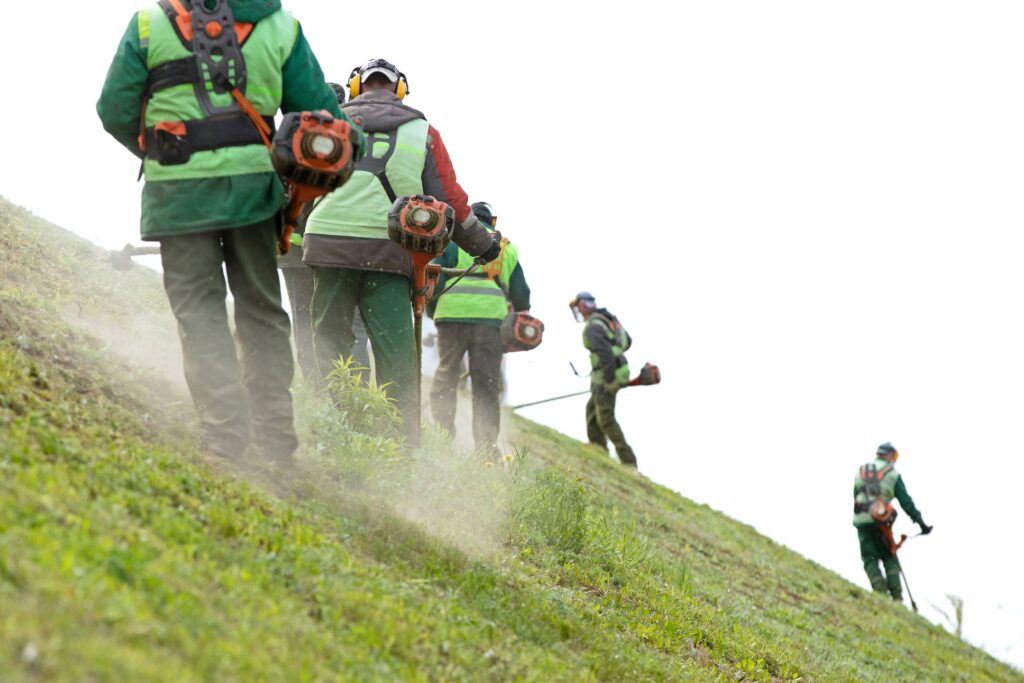Mowing steep slopes and uneven terrain presents unique challenges that require specialized knowledge and equipment. Professional landscapers face increased risks of equipment damage, personal injury, and subpar results when tackling these difficult areas. If you’re a landscape professional, be prepared to tackle steep slopes and uneven terrains with these best practices for mowing.
Essential Precautions and Protective Gear
Using safety equipment is the first step toward successful slope mowing operations. Steel-toed boots with deep tread patterns provide traction on unpaved surfaces, while safety glasses protect against flying debris. Hard hats are critical when working around trees and tall shrubs. High-visibility clothing helps crew members maintain awareness of each other’s locations during complex maneuvering.
Choose the Right Mower for the Job
Self-propelled mowers offer superior control on moderate slopes up to 20 degrees. These units allow operators to maintain proper footing while the machine handles forward momentum.
Remote-controlled mowers excel on slopes exceeding 30 degrees. These units can handle terrain that is too dangerous for traditional equipment while maintaining professional cutting standards. Some can even function on slopes of up to 55 degrees! It all depends on choosing the right remote-controlled slope mower for your application.
Robotic mowers provide consistent maintenance for regularly serviced slopes but require initial programming and boundary setup. These systems work best on established terrain with few obstacles and consistent grass growth patterns.
Methods for Challenging Terrain
Side-to-side mowing across slopes prevents dangerous runaway situations and reduces soil erosion. This technique maintains better traction and allows operators to work with gravity rather than against it.
Up-and-down mowing works best on gentle slopes with excellent traction conditions. Operators must maintain constant control and avoid sudden direction changes that could cause loss of stability.
Turning techniques require deliberate planning and execution on uneven terrain. Wide, gradual turns prevent equipment damage and maintain operator control. Avoid sharp turns, as they can cause tipping or loss of traction.
Keep Equipment Ready for All Conditions
Sharp blades become even more critical on challenging terrain where dull cutting edges can cause equipment to bog down or lose traction. Regular sharpening schedules should increase during heavy slope work to maintain optimal performance.
Pre-operation safety checks must include tire pressure, fluid levels, and blade condition before tackling difficult terrain. These inspections prevent equipment failure in dangerous situations where recovery becomes complicated.
Prioritize Safety and Efficiency on Every Job Site
Successful slope mowing requires combining equipment selection, proven techniques, and unwavering attention to safety protocols. Professional landscapers who follow these best practices can mow steep slopes and uneven terrain confidently while protecting their crews and equipment.
